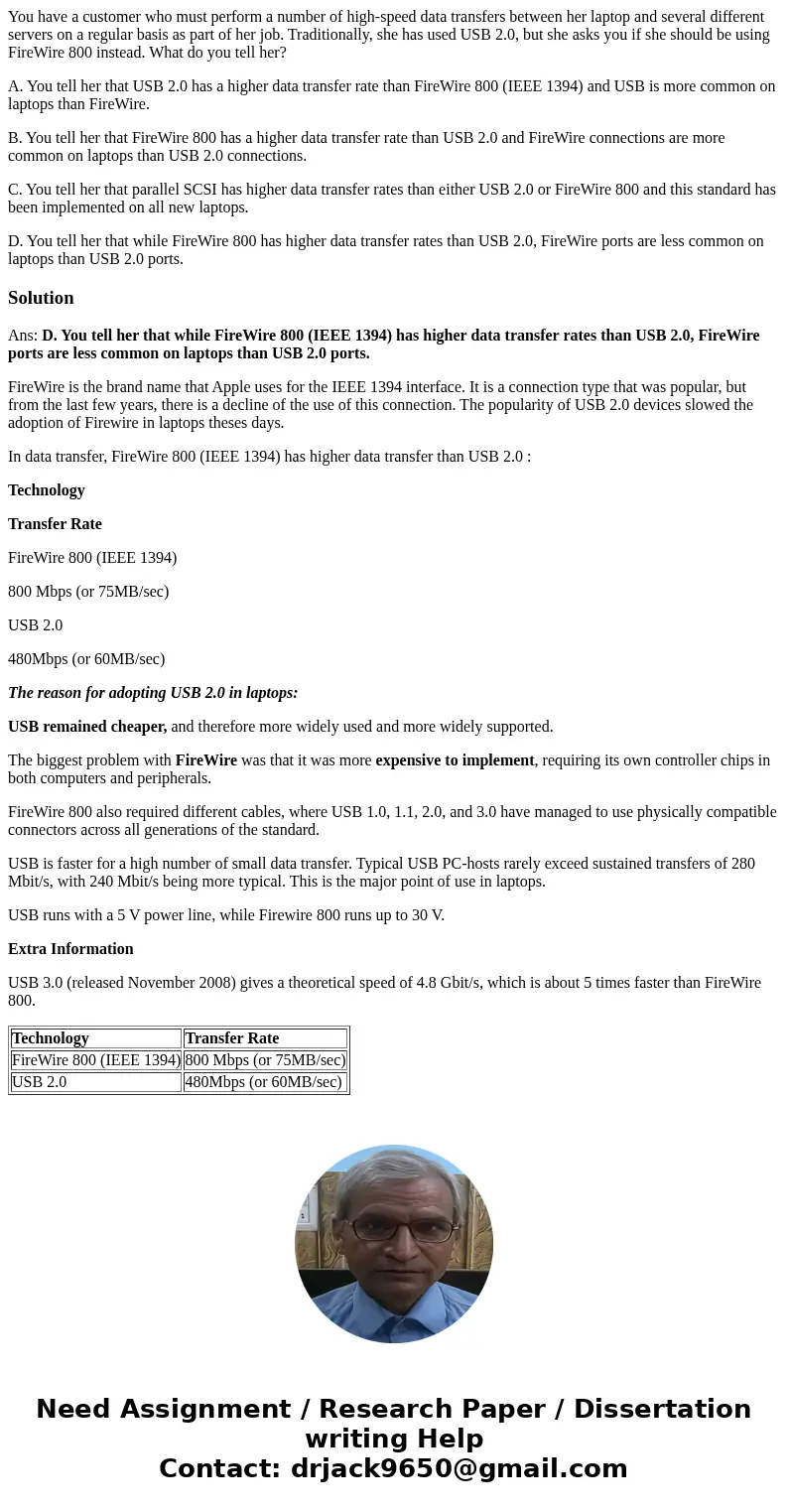You have a customer who must perform a number of highspeed d
You have a customer who must perform a number of high-speed data transfers between her laptop and several different servers on a regular basis as part of her job. Traditionally, she has used USB 2.0, but she asks you if she should be using FireWire 800 instead. What do you tell her?
A. You tell her that USB 2.0 has a higher data transfer rate than FireWire 800 (IEEE 1394) and USB is more common on laptops than FireWire.
B. You tell her that FireWire 800 has a higher data transfer rate than USB 2.0 and FireWire connections are more common on laptops than USB 2.0 connections.
C. You tell her that parallel SCSI has higher data transfer rates than either USB 2.0 or FireWire 800 and this standard has been implemented on all new laptops.
D. You tell her that while FireWire 800 has higher data transfer rates than USB 2.0, FireWire ports are less common on laptops than USB 2.0 ports.
Solution
Ans: D. You tell her that while FireWire 800 (IEEE 1394) has higher data transfer rates than USB 2.0, FireWire ports are less common on laptops than USB 2.0 ports.
FireWire is the brand name that Apple uses for the IEEE 1394 interface. It is a connection type that was popular, but from the last few years, there is a decline of the use of this connection. The popularity of USB 2.0 devices slowed the adoption of Firewire in laptops theses days.
In data transfer, FireWire 800 (IEEE 1394) has higher data transfer than USB 2.0 :
Technology
Transfer Rate
FireWire 800 (IEEE 1394)
800 Mbps (or 75MB/sec)
USB 2.0
480Mbps (or 60MB/sec)
The reason for adopting USB 2.0 in laptops:
USB remained cheaper, and therefore more widely used and more widely supported.
The biggest problem with FireWire was that it was more expensive to implement, requiring its own controller chips in both computers and peripherals.
FireWire 800 also required different cables, where USB 1.0, 1.1, 2.0, and 3.0 have managed to use physically compatible connectors across all generations of the standard.
USB is faster for a high number of small data transfer. Typical USB PC-hosts rarely exceed sustained transfers of 280 Mbit/s, with 240 Mbit/s being more typical. This is the major point of use in laptops.
USB runs with a 5 V power line, while Firewire 800 runs up to 30 V.
Extra Information
USB 3.0 (released November 2008) gives a theoretical speed of 4.8 Gbit/s, which is about 5 times faster than FireWire 800.
| Technology | Transfer Rate |
| FireWire 800 (IEEE 1394) | 800 Mbps (or 75MB/sec) |
| USB 2.0 | 480Mbps (or 60MB/sec) |

 Homework Sourse
Homework Sourse